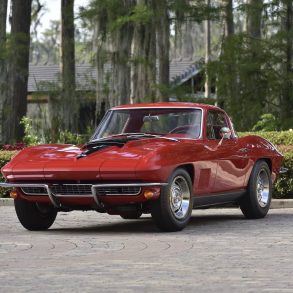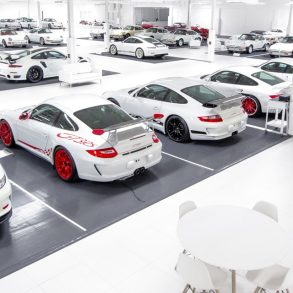Review by Rick Carey, Auction Editor

The annual Classic Car Auction Yearbook rings that bell with a yearly recap of the top sales in the collector car market.
Published in mid-fall, the Classic Car Auction Yearbook recaps the 12-month period from August of the past year through July of the current one. With the annual Monterey and Goodwood Revival auctions still a vivid memory it’s really a 15-month course in the market’s ups and downs.
This year’s 2011-2012 edition arrived this week with a cover prominently featuring the Ferrari 250 Testa Rossa (s/n 0666TR) that rang plenty of bells in August 2011 when it brought $16,390,000 at Gooding & Company’s Pebble Beach Auction, a transaction that still hasn’t been supplanted as the top individual vehicle sale at auction – subject to some quibbling about inflation.
The Yearbook’s editors at Historica Selecta in Modena, Adolfo Orsi and Raffaele Gazzi, do much, much more than just present line item summaries of transactions.
Each Yearbook starts off with commentaries from auction company department heads – this year Matthieu Lamoure at Artcurial, Rupert Banner at Bonhams, Max Girardo at RM and David Gooding at Gooding & Company – and the editors’ personal interpretation of transactions and trends.
More importantly, Orsi and Gazzi squeeze the transactions and numbers, like a tube of toothpaste, extracting tables, graphs and trends. ‘Paired Transactions’, two or more sales of the same car in substantially the same condition, are one of my preferred ways to see the market’s evolution and this year the Yearbook presents both summary statistics on same-car sales and some illustrated graphs of seven specific cars as varied as a 1933 Cadillac 452 V-16 and 1962 Ferrari 250 GT SWB Competition with some value lines flat (540K Cab A s/n 169363), some declining (1933 Cadillac 452-C V-16 All-Weather Phaeton s/n 5000116, coming off a flamboyant John O’Quinn acquisition) and some heading for the stratosphere (Ferrari 340 Mexico s/n 0226AT.)
The Orsi/Gazzi introduction notes that 864 of the 2011-2012 cars, which are generally clustered at the top of the market, 21% of the 4,150 transactions described in the Yearbook, had been reported previously in the Yearbook’s database. That turnover is consistent with the results that I have observed in recent years.
Cars with prior transactions are noted in the transaction summaries with the lot number date and auction house, but not with the prior transaction result that would make the progression (or regression in some cases) of values apparent without reference to prior Yearbooks or an extensive auction transaction database like Ccar. Prior transaction results would be a worthwhile inclusion in next year’s Yearbook and vastly enhance its value as a chronicle of the market.
The Yearbook also declines to report high bids on No Sale transactions, even though many of the auctions themselves report this – admittedly ephemeral – data. While the accuracy of high bids is arguable, it is far more information than a simple ‘NS’ and estimate range.
While making up this wish-list it would be profoundly helpful if Historica Selecta made the Yearbook available in a form that is searchable on portable devices, i.e., e-readers, tablets and smartphones. That would make it a particularly valuable ready reference on-site.
The Top Ten transactions are individually described in more detail with excerpts from the auction catalog descriptions. Not a surprise, but six of the ten were at the Monterey auctions, with two at the Goodwood Revival and one each at Monaco and Paris.
The bulk of the Yearbook consists of two- to four-line summaries of the 864 reported transactions arranged alphabetically by marque. The editors do an exceptionally good job of consistently presenting the often confusing nomenclature of models and body styles, and the auctions reported include many European, particularly Continental, sales less often covered in North America. That also brings in many marques not widely represented in North American collections, widening North American collectors’ perspective on the worldwide market.
The Yearbook’s inclusivity also helps North Americans value infrequently seen marques and models, no small benefit in what is essentially a worldwide marketplace.
A useful and informative resource, the Classic Car Auction Yearbook also is an entertaining overview of the past year’s ups, downs and sideways of the collector car market. Production values are high: quality paper, sharp reproduction, excellent color, sturdy binding.
The Classic Car Auction Yearbook 2011-2012 is available directly from Historica Selecta and may be distributed by specialist bookstores. It’s worth the effort to search it out.
[Source: Rick Carey]









